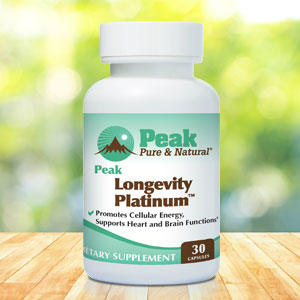Get Easy Health Digest™ in your inbox and don’t miss a thing when you subscribe today. Plus, get the free bonus report, Mother Nature’s Tips, Tricks and Remedies for Cholesterol, Blood Pressure & Blood Sugar as my way of saying welcome to the community!
Eating by the numbers: A simple way to make the best food choices

Have you ever heard a food described as having “empty calories?”
It would be great if that meant you could eat mounds and mounds of it and never gain weight, but that’s not at all what it means. The calories are there, but there’s not much else.
An empty-calorie food provides a lot of energy (calories) but very little nutritional value — such as prepackaged cookies or cakes, sugary drinks, hot dogs, bacon, pizza, burgers and fries.
The opposite of an empty-calorie food is a nutrient-dense food. The nutrient density of a food is the amount of nutritional value you get for the calories consumed. If you’re “spending” 500 of your daily calories on eating something, wouldn’t you want to get the most out of it?
Think of it like spending money. If you go to a clothing store and spend $500, you wouldn’t be happy if that just got you a shirt, right? I’d think you’d want to get the most spending power for your dollars and hopefully leave with a couple of new outfits — and, hopefully, a pair of shoes — at least.
You should expect the same value from the food you eat.
What are nutrient-dense foods?
There are many great reasons for eating only nutrient-dense foods. For starters, it can end the overwhelm you may be feeling when you think about how to make your diet healthier.
“Avoid sugar, but eat plenty of fruit,” or “cut out grains, but make sure you’re getting enough fiber,” are just some of the messages we hear about healthy eating that might be confusing you.
Then, there are all the complicated nutritional plans out there, like keto, paleo, low-FODMAP and others. You really need a copy of each diet plan’s bestselling book just to keep up with which foods you can eat and which you can’t.
That’s not the case if you follow a nutritarian diet. In fact, ask yourself…
Do you want to…
- Simplify your eating?
- Eat “real” foods?
- Always feel confident that you’re choosing foods that are good for you and avoiding those that are bad for you?
Stick to nutrient-dense foods and you’ll accomplish all three.
Another reason to eat a nutrient-dense diet is that it is essentially an anti-inflammatory diet.
Plenty of research identifies chronic, low-level inflammation as the root cause of disease, including premature aging, diabetes, cancer and other chronic illnesses. Eating nutrient-dense foods helps you stock up on the essential nutrients needed to prevent chronic inflammation.
Eating ‘nutritarian’
As we said earlier, nutrient-dense food is relatively rich in nutrients for the number of calories it contains.
Vegetables, fruits, whole grains, beans, nuts, seeds, and lean protein — when prepared with little to no saturated fat, added sugar and sodium — are nutrient-dense foods.
Dr. Joel Fuhrman, a board-certified family physician and nutrition expert, coined the term nutritarian to describe someone who makes food choices based on micronutrient per calorie, rather than by counting calories or by eating only low-fat foods or following a “one size fits all” diet plan.
This means focusing on eating a variety of the most nutrient-dense foods available to feel full, satisfied and healthy. Clearly, we’re talking about whole, unprocessed foods with a heavy emphasis on plant-based foods.
Moving toward nutritarian eating
Moving toward eating a more nutrient-dense, anti-inflammatory diet is a journey, but not a difficult one, at least as far as knowing what foods to eat to get the most nutritional value from your calories.
Think of it like eating by the numbers. Did you ever paint by the numbers? When you have a guide to follow, like what color to paint each section, anyone can be an artist.
Dr. Fuhrman’s ranking of foods based on their nutrient density is the guide you need to paint a healthier plate at every meal. All you have to do is look at each food’s score. The more nutrient-dense a food is, the more satisfied you’ll be with fewer calories.
For example, dark green, leafy vegetables like kale and collard greens get a score of 1,000. Next, come other green vegetables like spinach with a score of 707 or arugula at 604.
Non-green vegetables that are still rich in vitamins and antioxidants get a lower score. They’re still full of nutrition, but the ratio of calories to nutrition is slightly higher. We’re talking about bean sprouts, red and yellow peppers and carrots.
Going down the scale, we have fresh fruits, beans, raw nuts and seeds, fish, dairy, and red meat at the bottom of the scale. They require eating more calories to gain the same amount of nutrition as you would from vegetables.
At the very bottom, you’ll find corn chips and cola, scoring 7 and 1, respectively, as perfect representations of empty-calorie foods you should avoid altogether or rarely enjoy.
Make no mistake, you can apply this style of eating to every meal of the day, even to snacking. It’s not about following a rigid diet, but about wise food selection.
Editor’s note: There are perfectly safe and natural ways to decrease your risk of blood clots including the 25-cent vitamin, the nutrient that acts as a natural blood thinner and the powerful herb that helps clear plaque. To discover these and other secrets of long-lived hearts, click here for Hushed Up Natural Heart Cures and Common Misconceptions of Popular Heart Treatments!
Sources:
How Can I Eat More Nutrient-Dense Foods? — American Heart Association
Why You Should Eat Nutrient-Dense Foods + What That Really Means — cleanplates.com
Top Nutrient-Dense Foods and Their Benefits — draxe.com














